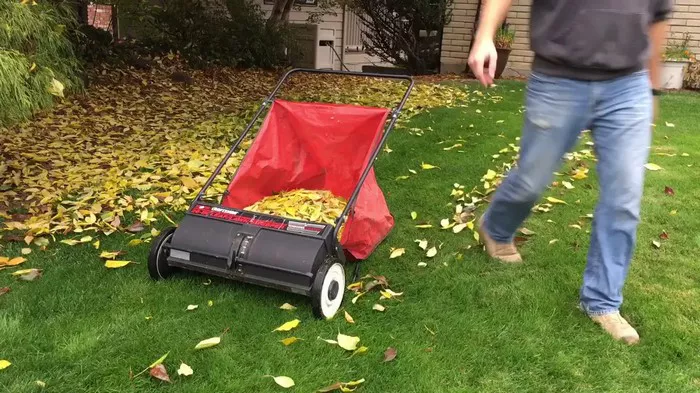Lawn maintenance is a vital aspect of home ownership, contributing to the aesthetic appeal and overall health of your outdoor space. Among the arsenal of tools available for lawn care, a lawn sweeper stands out as a versatile and efficient solution for keeping your lawn tidy. In this comprehensive guide, we’ll explore what a lawn sweeper is, how it works, its benefits, and considerations for choosing the right one for your needs.
What is a Lawn Sweeper?
A lawn sweeper is a mechanical device designed to efficiently collect debris, such as grass clippings, leaves, twigs, and other lawn detritus, from the surface of your lawn. Unlike traditional rakes or leaf blowers, which require manual effort and can be time-consuming, a lawn sweeper streamlines the process by utilizing rotating brushes or bristles to sweep debris into a hopper or collection bag, which can then be easily emptied.
How Does a Lawn Sweeper Work?
Lawn sweepers operate on a simple yet effective principle. They are typically pushed or towed behind a lawn tractor or riding mower, although some models are self-propelled. As the sweeper moves across the lawn, the rotating brushes or bristles spin, sweeping debris into the collection mechanism. Some sweepers feature adjustable height settings to accommodate different types of debris and terrain.
Once the collection hopper or bag is full, it can be easily emptied by either lifting it off the sweeper or using a release mechanism, depending on the model. This allows for continuous operation without the need for frequent stops to empty the debris.
Benefits of Using a Lawn Sweeper
1. Efficiency: Lawn sweepers are highly efficient at quickly clearing debris from large areas of lawn, saving you time and effort compared to manual methods like raking.
2. Gentle on Grass: Unlike heavy-duty leaf blowers or vacuums, lawn sweepers are designed to be gentle on grass, minimizing the risk of damage to your lawn while effectively clearing away debris.
3. Versatility: Lawn sweepers can be used in various outdoor spaces, including residential lawns, parks, athletic fields, and golf courses, making them a versatile tool for grounds maintenance.
4. Easy Storage: Many lawn sweeper models feature collapsible handles or foldable hoppers, making them compact and easy to store when not in use.
5. Seasonal Maintenance: Lawn sweepers are particularly useful during the fall season for clearing leaves, helping prevent them from suffocating the grass and promoting a healthy lawn.
Considerations for Choosing a Lawn Sweeper
When selecting a lawn sweeper, several factors should be taken into account to ensure you choose the right model for your specific needs:
1. Size of Lawn: Consider the size of your lawn or outdoor space. For smaller lawns, a compact push sweeper may suffice, while larger areas may require a tow-behind model for optimal efficiency.
2. Terrain: Evaluate the terrain of your lawn, including any slopes, bumps, or obstacles. Look for a lawn sweeper with adjustable height settings and sturdy construction to handle uneven terrain effectively.
3. Debris Types: Assess the types of debris commonly found in your lawn. Some sweepers are better suited for collecting specific types of debris, such as leaves or pine needles, so choose a model that can effectively handle the debris prevalent in your area.
4. Storage Space: Consider the availability of storage space for your lawn sweeper when not in use. If storage space is limited, look for a model with a compact design or foldable features.
5. Budget: Determine your budget for purchasing a lawn sweeper and compare different models based on their features, durability, and overall value for money.
By carefully considering these factors, you can select a lawn sweeper that meets your specific requirements and helps you maintain a pristine lawn with minimal effort.
FAQs
Q1: Can a lawn sweeper be used on wet grass?
A1: While it’s generally recommended to use a lawn sweeper on dry grass for optimal performance, some models can handle light moisture. However, using a lawn sweeper on excessively wet or soggy grass may lead to clogging and reduced effectiveness. It’s best to wait for the grass to dry out before using a lawn sweeper to ensure efficient debris collection.
Q2: Can a lawn sweeper pick up pine needles and small twigs?
A2: Yes, many lawn sweeper models are equipped to pick up pine needles, small twigs, and other lightweight debris commonly found in outdoor spaces. However, it’s essential to select a lawn sweeper with appropriate brush or bristle density and adjustable height settings to effectively collect these types of debris without causing damage to the sweeper or compromising performance.
Q3: How often should I empty the collection bag or hopper of my lawn sweeper?
A3: The frequency of emptying the collection bag or hopper of your lawn sweeper depends on several factors, including the size of your lawn, the density of debris, and the capacity of the sweeper. As a general rule of thumb, it’s recommended to empty the collection bag or hopper when it’s approximately two-thirds full to maintain optimal performance and prevent overloading. Regularly emptying the collection mechanism ensures continuous operation and prevents debris from spilling back onto the lawn.

